A color image has separate red, green, and blue (RGB) components. This type of image can not be used when dealing with compression. If an image is to be compressed, RGB formated pixels must be transfer to the formation of grey scale and color differences, known as YUV or YCrCb space. Thus all RGB images must be transfered to YUV color space before forward wavelet transform is performed, and returns to RGB format after inverse wavelet transform. Note that for any image stored in YUV space, human eyes are sensitive to the grayscale images but is not sensitive toward the color difference images. Thus, 4:2:0 color difference coding can be used to further increase the compression ratio [6].
Transform from RGB to YUV:
y = 0.2990 * R + 0.5870 * G + 0.1140 * B
U = -0.1687 * R - 0.3313 * G + 0.5000 * B
V = 0.5000 * R - 0.4187 * G - 0.0813 * B
Transform from YUV to RGB:
R = Y + 0.00000 * U + 1.40200 * V
G = Y - 0.34414 * U - 0.71417 * V
B = Y + 1.77200 * U + 0.00000 * V
The forward and inverse wavelet transforms is implemented using
Quadrature Mirror filters (QMF)
[7].
The QMF filters consist of a low-pass filter, H, and high-pass filter, G.
The relationship between filters H and G is
Forward wavelet transform is implemented using H_bar and G_bar filters,
where inverse wavelet transform is implemented using H and G filters.
The relationship between H and H_bar, G and G_bar filters are
In order to reduce the nonzero wavelet coefficients corresponded
to an edge, smaller number of wavelet taps is more desired
[7].
Daubechie's 6 taps wavelet "is well known
and has some nice properties" [8]. Thus,
six taps Daubechie's wavelet is chosen to implement the module.
The filter coefficients for Daubechie's six tap wavelet is listed as follow.
A two-dimensional forward wavelet transform can be implemented using
2 one-dimensional forward wavelet transforms; one in horizontal direction,
the other in vertical direction.
Please note that the color image is assumed to be periodic; thus
circular convolution [9] is used to implement the module.
B. Implementing Wavelet Transform
g(n) = (-1)^n * h(1-n)
g(n) = g_bar(-n)
h(n) = h_bar(-n)
h(0) = 0.332670552950
h(1) = 0.806891509311
h(2) = 0.459877502118
h(3) = -0.135011020010
h(4) = -0.085441273882
h(5) = 0.035226291882
A one-dimensional data, d is filtered using Daubechie's filter by
convolving the filter coefficients h(k) and the input data:
new_d(i) = h(0) * d(i-0) + h(1) * d(i-1) + ... + h(5) * d(i-5)
After filtering the one-dimensional data using Daubechie's filter,
downsampling by 2 is followed to reduce the data size to half.
See Figures 1 and 2 for detailed forward and inversed wavelet transform
block diagrams.
Recall the the relationship between filters g,
g_bar, h, and h_bar, coefficients between QMF filters, h_bar and g_bar is
differed by 4 delays (see reference
[7]). Thus, it is necessary to rotate the image
back 4 times during reconstruction.
Block Diagrams
Block diagram for forward wavelet transfrom

Figure 1 illustrates a single forward wavelet
transform of a given image.
Given an image, f(x,y), it is first filtered along x direction, resulting
in a low-pass image, fl(x,y) and a high-pass image fh(x,y). Note
that after downsampling by 2, both images have reduced to half on its
x direction. Same method is applied on two subimages
along y dimension resulting in four subimages : one low-pass, fll, and
three high-pass, flh, fhl, and fhh.
Hilton, Jawerth, and Sengupta[8] described these
four images as the "average signal (fll) and three detail signals
which are directionally sensitive: flh emphasizes the horizontal
image features, fhl the vertical features, and fhh the diagonal features".
Block diagram for inverse wavelet transfrom

Figure 2 showes the block diagram of the inverse
wavelet transform. An upsampling by 2(i.e., insert zero between
two values) is used to reconstruct the
image back to its original size.
Wavelet transform can be applied recursively on the average signal,
resulting in higher compression ratio.
RESULTS
TajSmall.tiff and logo.tiff images are used to test
if horizontal, vertical and diagonal
features are extracted out from original image into flh, fhl, and fhh
subimages. Figure 11 showes the result after one wavelet transform and
figure 12 showes the result after three levels of
wavelet transform applied to logo.tiff image.
Different reconstructed images are shown here to see how higher
compression ratio affecting the images. In general, increasing
the compression ratio will just reduce the visibility of the edges in
the reconstruced images.

Figure 3. TajSmall.tiff, the original RGB color image

Figure 4. The TajSmall image after 4 wavelet transforms.
This is the picture after forward wavelet transforms.
Four levels of wavelet transforms are applied to the original image.
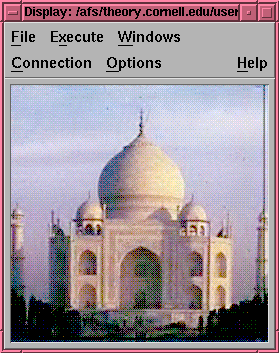
Figure 5. The reconstructed TajSmall image after four levels of wavelet
transforms. All high-pass data are stored and
used in inverse wavelet transform process.

Figure 6. The reconstructed TajSmall image with 4:1 compression.
This image has been compressed using ratio 4:1 by dropping all
horizontal, vertical, and diagonal information produced from first level
wavelet transform. That is, all the first
level high-pass subimages have been assumed to be zero. The result
looked almost the same as the original image.
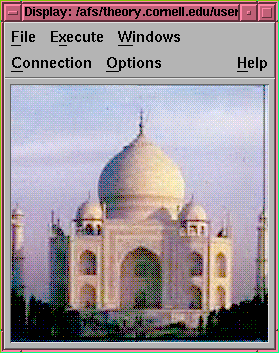
Figure 7. The reconstructed TajSmall image with 16:1 compression.
The lossy compression method used here is by dropping all high-pass
subimages produced from first and second levels wavelet transform.
With higher compression ratio, the reconstruced image starts to loss
some edges information. The result still looked very much like the
original image.
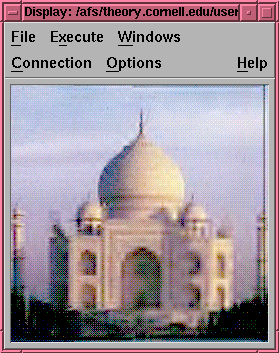
Figure 8. The reconstructed TajSmall image with 64:1 compression.
The lossy compression method used here is by dropping all high-pass
subimages produced from three levels of wavelet transform.
With 64:1 compression ratio, the final image
has lost some of the high-frequency information,
resulting in a little blur TajSmall image.
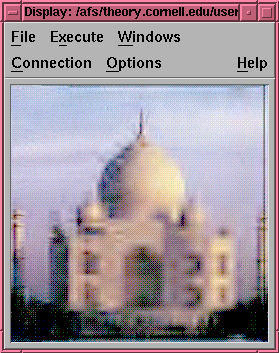
Figure 9. The reconstructed TajSmall image with 256:1 compression.
The lossy compression method used here is by dropping all high-pass
subimages produced from all four levels of wavelet transforms.
With 256:1 compression ratio, the final image
has lost lots of edge information, resulting in a very blur TajSmall image.

Figure 10. The original Cornell Theory Center logo image

Figure 11. The RGB logo image after 1 level of wavelet transform.
After a single wavelet transform, we can clearly see the horizontal,
vertical, and diagonal data has been stored in high-pass subimages.

Figure 12. The RGB logo image after 3 levels of wavelet transforms.
After three levels of wavelet transforms, we can see how high-pass data
has been extracted out from the average image per each level of wavelet
transform.
GETTING THE MODULES
This module is designed for IBM Series 6000 only. Please make sure the
libraries on your system is the correct location used in Makefile.
The required files are:
To run the module, do "make wavelet" to compile the C codes.
Run the module by type in "dx -memory 100 -mdf ./wavelet.mdf -exec ./dxexec &".
Select the demo.net as am example and run it with any
given .tiff images.
USING THE MODULE & EXAMPLES
The wavelet transform module takes five inputs from user.
Image input must be specified before running the module.
If the image is RGB color and in .tiff format, there is no need to
enter the width and the height of the image. Otherwise, width and height
must be specified. User can enter the number of wavelet transforms
to be performed on the image. If no number of level is given, the default
value is one level. User should choose whether forward or inverse
wavelet transform will be performed in the module; if no input received
from user, the default is forward wavelet transform.
For forward wavelet transform, image input must be any RGB color image;
the output will be in both YUV and RGB formats. If inverse wavelet transform
is used, image input must be in YUV format. Width and height of the YUV
image must be given to the module; RGB will be the visible output for
observation.
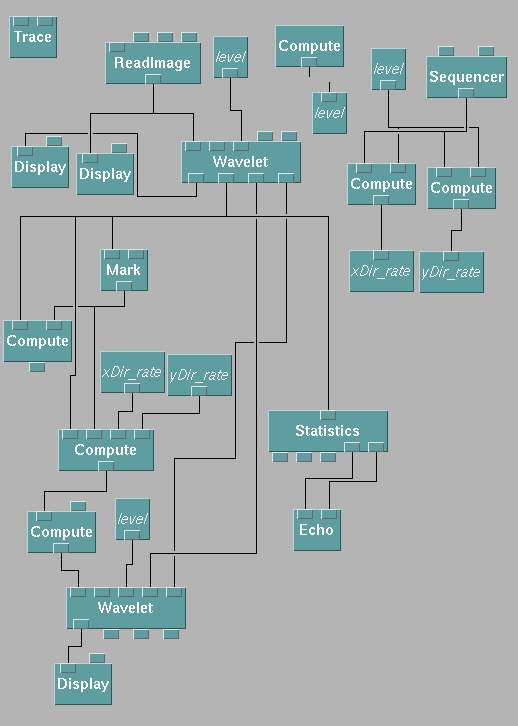
Figure 13. This is how demo.net should look like when displayed in
the DX system.
demo.net
CONCLUSIONS
In this project, a C module is implemented for compressing color images.
All color images are stored in RGB color space. In order to apply
wavelet transform onto a given color image, one must transfer this
image from RGB space to YUV space.
See Color Space Transform section for detailed
formulas to transfer between two spaces.
In general, the higher number of wavelet transforms performed on average
image, the higher compression ratio one will get.
This is because the more number of wavelet transforms is used,
the more high-pass information is extracted out from the original image.
Since high-pass subimages are mostly sparse, lossy compression coding
can be used to get better compression ratio. In this project, the compression
method used is simply by throughing away those high-pass information. The
more high-pass data we dropped, the more blur we get from the reconstruced
image.
Compare to RGB color space, YUV space provides better access
when dealing with compression. This is because human vision is
not very sensitive to color differences. Thus U and V spaces can be further
compressed by factor of two on both horizontal and vertical directions, yet
our eyes won't notice the changes.
There is one assumption used in the wavelet transform module.
Traditionally, wavelet transform assumes all images are periodically
repeated. But images are not periodic, and instead, they
are surrounded by zeros.
Due to this assumption used in the module, there is some error
exist near the edges of the reconstructed image. If the level of
wavelet transform is increased, this error will cumulate, resulting
in more error around the edges of the reconstruced image. Thus number
of wavelet transforms used on a image should be kept as few as possible.
Some research regarding this matter is now undergoing in MIT. Hopefully
new improved wavelet transform can be developed in the near future.
ACKNOWLEDGMENT
I would like to express my sincere appreciation to Professor
Bruce Land for providing
the expert guides and equipment that is necessary to complete this
work. Special thank to my parents who financially surported me to
make this study at Cornell University possible.
REFERENCES
[1] Gregory K. Wallace, "The JPEG Still Picture
Compression Standard" IEEE Transactions on Consumer Electronics,
Vol. 38 No. 1 Feb. 1992.
[2] Didier Le Gall, "MPEG: A Video Compression Standard for
Multimedia Applications" Communications of the ACM.
Vol. 34 No. 4 April 1991. pp. 47-58
[3] IBM Data Explorer 2.0. For more information, click
here
[4] Marc Antonini, Michel Barlaud, "Image
Coding Using Wavelet Transform" IEEE Transactions on Image Processing,
Vol. 1, No. 2, April 1992. pp. 205-220
[5] I. Daubechies "Ten Lectures On Wavelets"
Society for Industrial and Applied Mathematics, 1995.
[6] Charles A. Poynton "Technical Introduction to Digital
Video" Wiley & Sons, 1995. pp. 28-29
[7] A. Lewis G. Knowles
"Image Compression Using the 2-D Wavelet"
IEEE Transactions on Image Processing, Vol. 1 No. 2 1992. pp.244-250
[8] M. Hilton, B. Jawerth, A. Sengupta
"Compressing Still and Moving Images with Wavelets"
Multimedia Systems, Springer-Verlag 1994. 2:218-227
[9] A. Oppenheim R. Schafer
"Discrete-Time Signal Processing"
Prentice Hall, 1989.